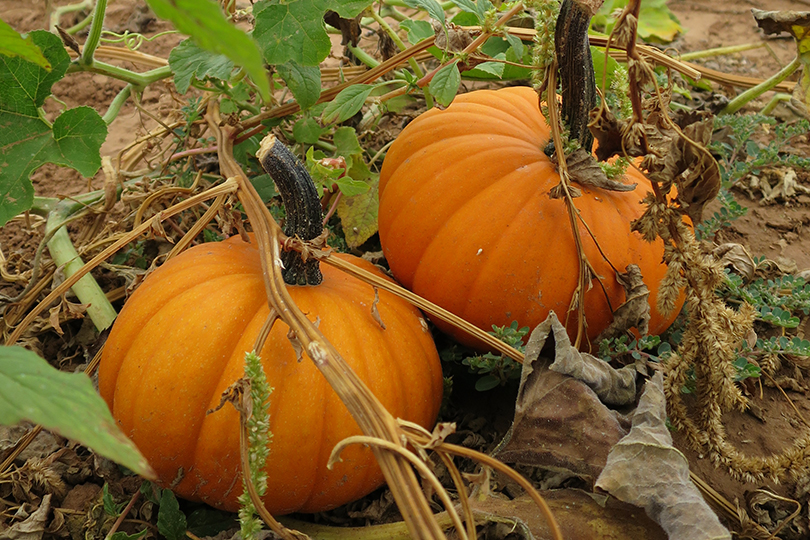By Jennifer Whitlock
Field Editor
In September, young students from across Texas took a virtual field trip to a pumpkin farm through Texas Farm Bureau’s (TFB’s) Farm From School program.
The first virtual farm trip of the fall semester took students to Floyd County, where Tanner Smith has grown pumpkins since 2003. He led the students on a journey from seed to gourd, explaining the plant’s life cycle and how pumpkins grow.
“We were so excited to ‘take’ our students to a pumpkin farm in the South Plains, so they could see firsthand where and how pumpkins are grown,” Jordan Walker, TFB associate director of Organization Division, Educational Outreach, said. “Children across Texas know what pumpkins are. Many have bought and carved a pumpkin for Halloween. It’s something they can see growing and tie directly back to the product in the store. So, it was a very good starting point for this semester’s Farm From School visits.”
Pumpkin plants are vines, Smith told the group of kindergarten through third graders. A pumpkin begins as a small green gourd and develops over three to four months to the orange, white, green or speckled varieties found at grocery stores and garden centers across the Lone Star State from September to November.
When a pumpkin is mature, the inside contains pulp and seeds, which can be planted the next year to begin the life cycle again.
The two main types are pie pumpkins and decorative pumpkins. Smith noted all the pumpkins grown in Floyd County are decorative, showing the students examples of Cinderella, fairy tale, warted, mammoth, mini and jack-o-’lantern varieties.
The types grown and canned for pumpkin pies are cultivated in the Midwest and machine-harvested.
But every decorative pumpkin like those grown in Texas is harvested by hand, he said.
Laborers cut each pumpkin off the vine and line them up in rows in the field. Another crew follows behind, tossing the pumpkins up to people waiting on a trailer pulled by a large tractor. After collection, they’re sent to a shed or warehouse for sorting and shipping.
A standard yield of Jack O’ Lantern pumpkins is about 30,000 pounds per acre. Each pumpkin is about 30 pounds, so there are about 1,000 pumpkins per acre.
Students asked Smith questions in real time about pollination, cultivation, harvest, why pumpkins don’t grow on trees and more. He also talked about some of the challenges farmers experience when growing pumpkins.
“He did a great job of explaining farm concepts to the students in a way they could understand and helped them learn more about agriculture in his area,” Walker said. “He told them about the other crops grown in Floyd County, what they do with cracked or disfigured pumpkins, talked about the cost of growing pumpkins and how to grow their own in their school gardens. There were some good questions and lots of engagement from the classrooms, and it was all-around a great experience.”
Students will “travel” to three more farms and ranches this fall, learning more about agriculture across the state.
Get more information on the Farm From School program on the Ag in the Classroom webpage.
Sign up for the spring 2022 Farm From School program will open in mid-October.

